On the northeastern slope of the Roccamonfina volcano in Central-Italy, there is a place the locals call Ciampate del Diavolo. Also known as Devil’s Footprints or Devil’s Trails, the sloping tuff wall reveals at least 46 prehistoric human footsteps and animal prints from the Middle Pleistocene. For the last two centuries, people of Foresta, the small town in Tora-Piccilli, believed that only the devil could walk their hills in hot lava. Finally, in 2001 ichnologists began studying the prints. They had discovered at least two well-preserved tracks that probably belonged to Homo heidelbergensis dating to roughly 350,000 years BP. At the time of discovery, these were the oldest human footprints in Europe.
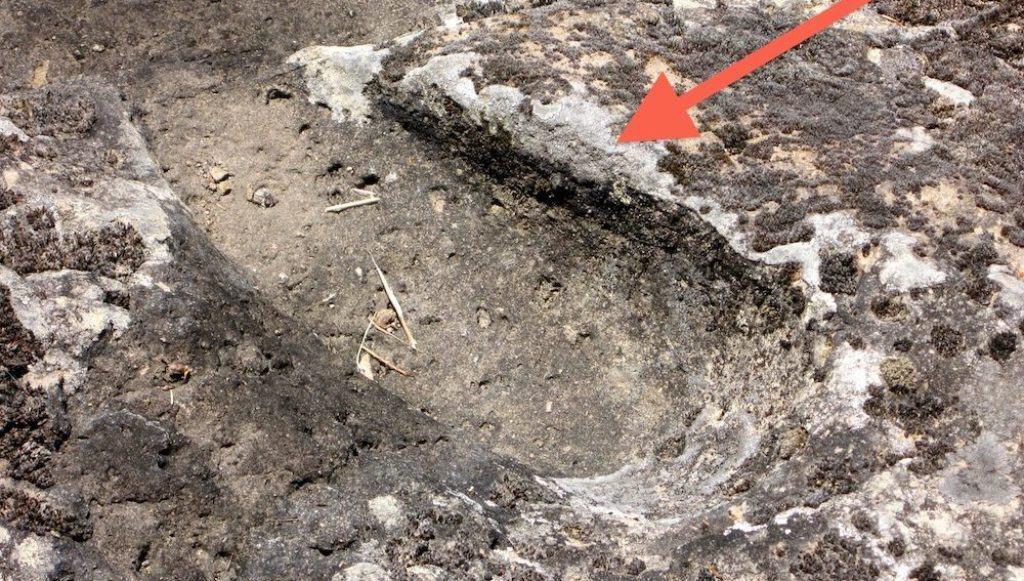
How Did the Fossilized Human Footprints Form?
The Devil’s Footprints paleontological site formed between 325,000 to 385,000 years ago when the Roccamonfina volcano erupted. A pyroclastic flow of hot pumice (rather than lava) swept across its surrounding slopes. This turned into muddy ash in the later stages of the blast. When the eruption finally subsided, at least two hominin Homo heidelbergensis traversed the blanket of ash which had cooled to a tolerable temperature of 20°- 60° Celsius. Subsequently, the ash solidified and then was covered up by more layers of volcanic sediment.
Over time, weather and human activity eroded the upper layers away and revealed the Homo heidelbergensis tracks and animal prints. Then in the 1800s, villagers of the area found the tracks. However, lacking any scientific explanation, they created a legend about the devil walking in lava. In 2003, archaeologists announced their findings of the ancient human footprints and supplanted a scientific explanation for the old one.
You May Also Like: Bolivia Dinosaur Footprints Wall at Cal Orcko
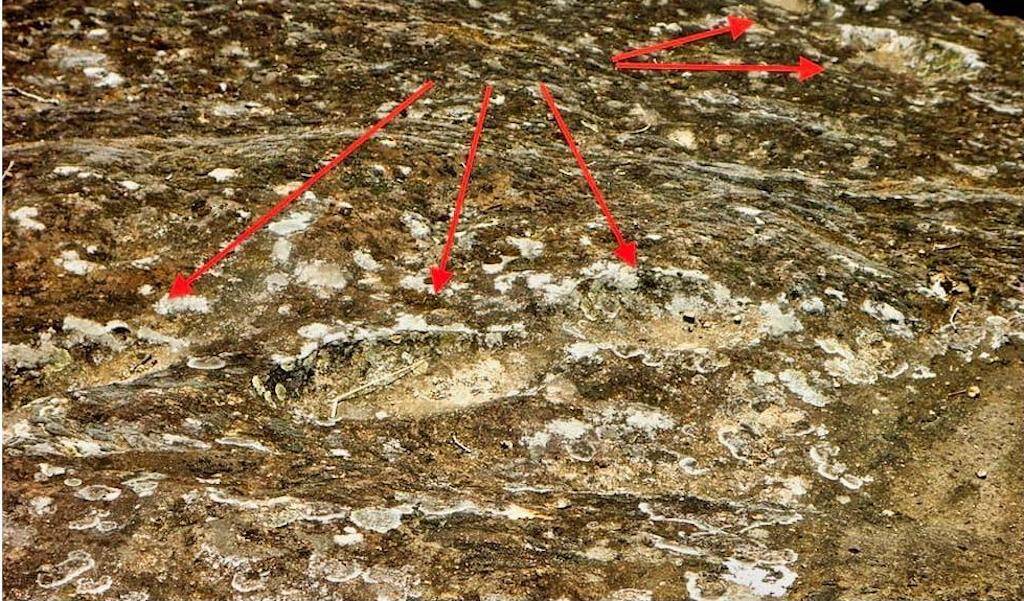
Segments of Different Tracks on the Wall
The two clearest tracks head down a steep slope with an incline of up to 80 degrees. Trackway A takes on a path that zigzags across the hill. This suggests that the trackmaker intelligently assessed the danger of the slope and traversed the steepness in a safe way. The points of foot impact are evident in the tracks. Details such as “the shape of the forefoot, the big toe, the second and third digit, [and] the arch of the plantar,” in addition to the step gait, indicate bipedal left-right movement (Angelillo).
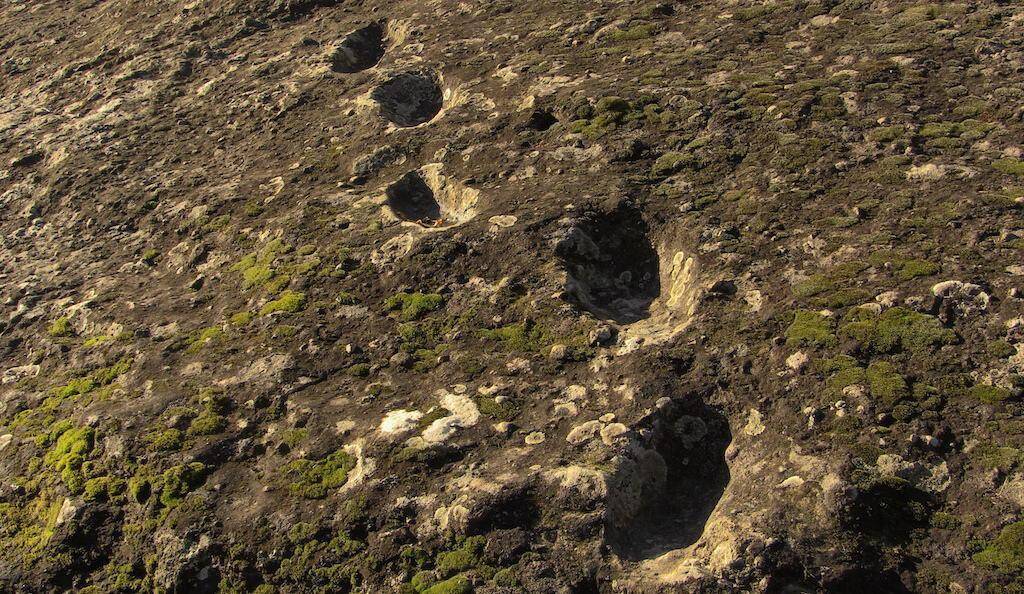
On the other hand, Trackway B additionally contains calves, buttocks, and a hand that imprinted into the sidewall when that trackmaker slipped and fell. At other times, trackmaker B used his left hand to steady himself at steep points to maintain his balance.
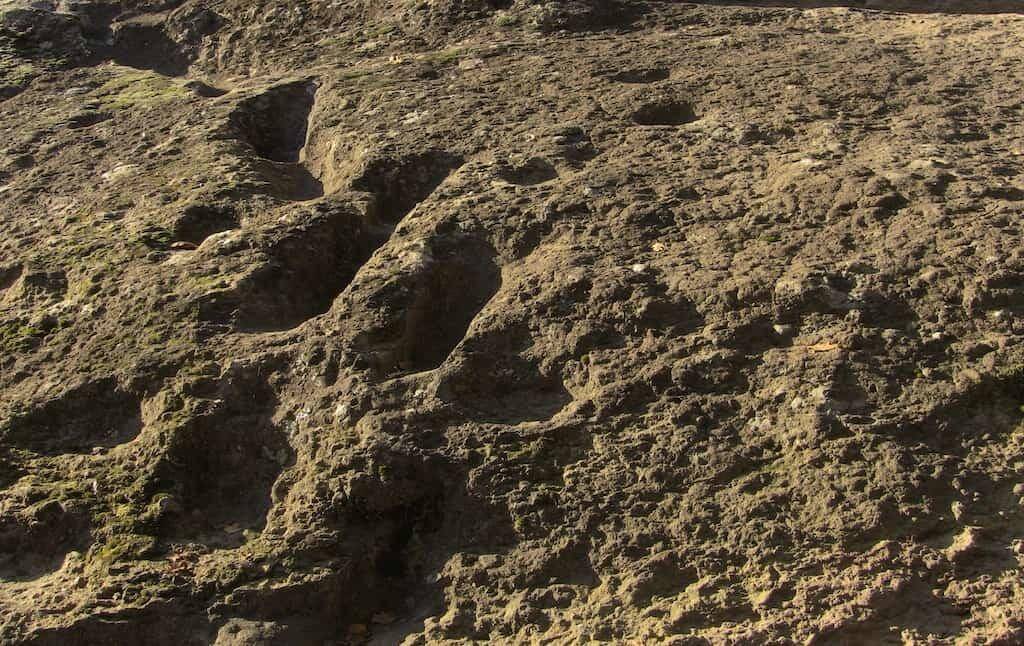
Both trackways indicate the individuals were walking down at a moderate pace of about 2.2 mph in a southeasterly direction. Based on that pace, it appears that they were not fleeing the eruption. Their steps were roughly 23 inches apart down the steep incline. Experts speculate that perhaps they were hunting or heading down for water. (Angelillo 2017).
There is a third track, Trackway C, however, it is still under investigation.
Animal Tracks
In addition to the prehistoric human footprints, there were a number of animal tracks. Many of them are poorly preserved and still under investigation, however, there are preliminary reports of horse, bear, and ruminant (possibly deer) tracks on the sloped surface.
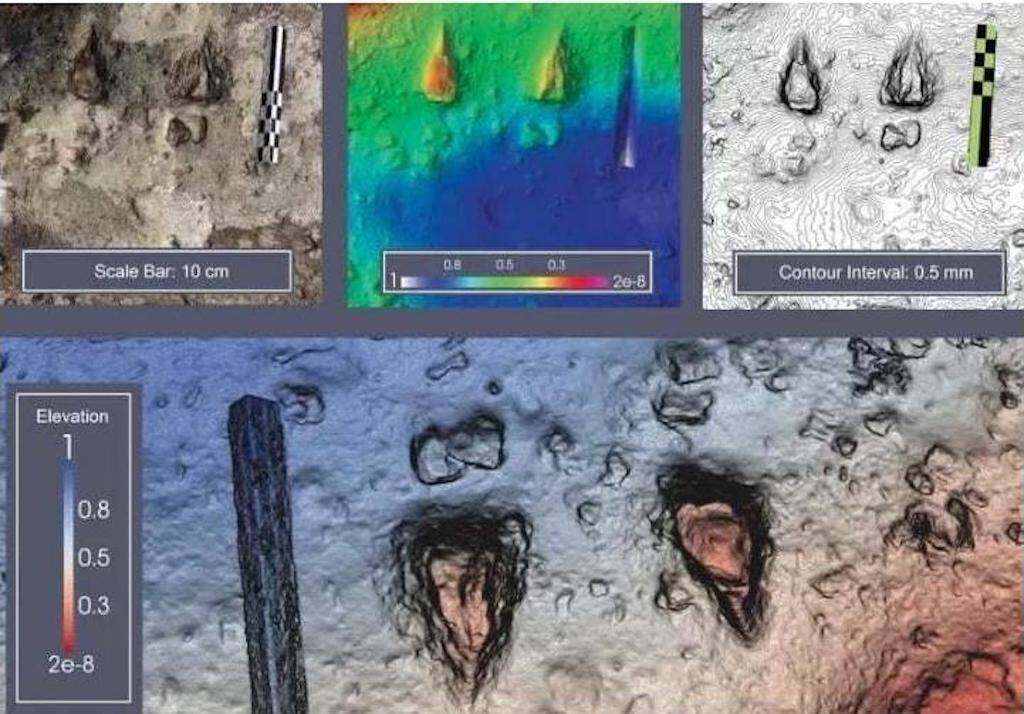
The horse-like tracks cross over Trackway B and are subcircular. A semi-oval print with five small depressions along the front edge has characteristics of a bear. There are pits, possibly claw marks, in front of the small depressions, which could conceivably correspond to toes. It is possible this species of bear could be Ursichnus europeus, a type of cave bear that has rarely been reported in Italy. (Panarello et al).
You May Also Like: Did Human and Dinosaurs Coexist?
Who Made the “Devil’s Footprints”
Homo heidelbergensis were hominins that were predecessors of Neanderthals in Europe. They were hunter-gatherers, and they worked together in coordinated groups. Their tools consisted of stone and, at times, stone and wood. As big-game hunters, Homo heidelbergensis were tall and strong with males reaching 5 feet 9 inches. However, whoever made the ancient human tracks at the Devil’s Trails appear to have been smaller in stature. A preliminary analysis determined that the height of the travelers may have been about 4 feet 6 inches.
At the time of their discovery in 2001, the Homo heidelbergensis trails at Roccamonfina were the oldest human footprints in Europe. Then in 2014 in Happisburgh, England, a museum curator found human prints in the sediment along a shoreline that had become exposed by a storm. Researchers determined the age of the prints to be 800,000 years old. As a result, the Happisburgh footprints became the oldest human footprints outside of Africa. Unfortunately, the tides destroyed the tracks and they no longer exist.
Cross Shape in the Rock
Interestingly, additional strange impressions also exist near Trackways A and B. These imprints take the shape of a cross, however, researchers are unsure of their origin.
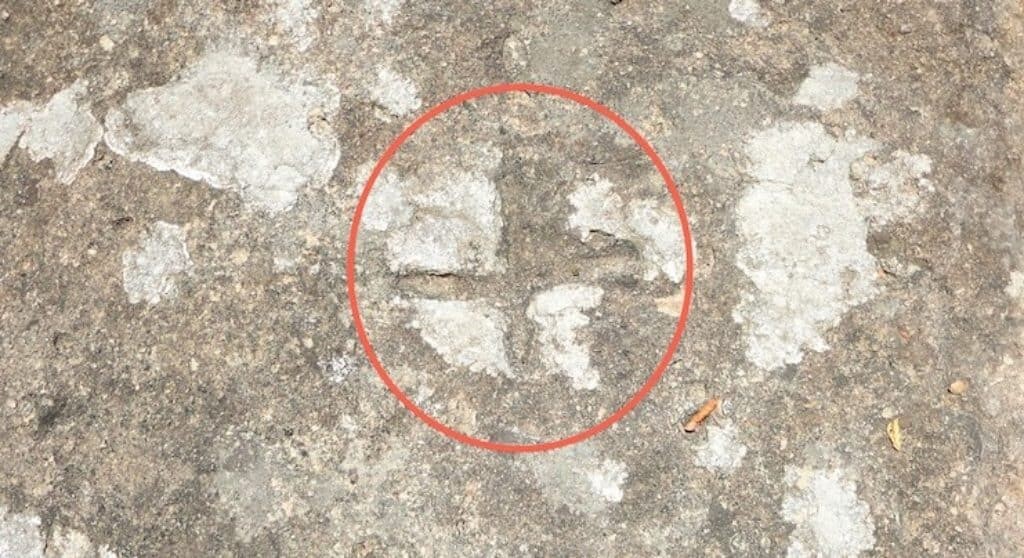
An Even Older Pathway
Research is still ongoing at the Devil’s Trails site. In fact, more human tracks and animal prints exist on a “bench” above the steep hill that contains Trackways A and B. That site has the designation of the oldest human fossil pathway in the world, as it appears that Homo heidelbergensis people and animals used it regularly as a trail. Perhaps additional research may one day help us understand the behaviors of the people who made the Devil’s Trails, their culture, and how they utilized the area. Meanwhile, the prints are eroding away with exposure to the elements, and it is imperative that authorities implement conservation efforts to protect this historical treasure at Roccamonfina.
References:
Angelillo, Marco. “Ciampate Del Diavolo, Sulle Orme Dei Primi Italiani: Il Più Antico Sentiero Preistorico.” Repubblica.it. October 15, 2017. Accessed October 23, 2018.
Panarello, Adolfo, Italo Biddittu, Maria Rita Palombo, and Paolo Mietto. “FIFTEEN YEARS ALONG THE “DEVIL’S TRAILS”: NEW DATA AND PERSPECTIVES.” Academia.edu. 2017. Accessed October 23, 2018.
Human Footprints in the Pleistocene Volcanic Ash, © 2003 Nature Publishing Group
Originally published on June 25, 2012.